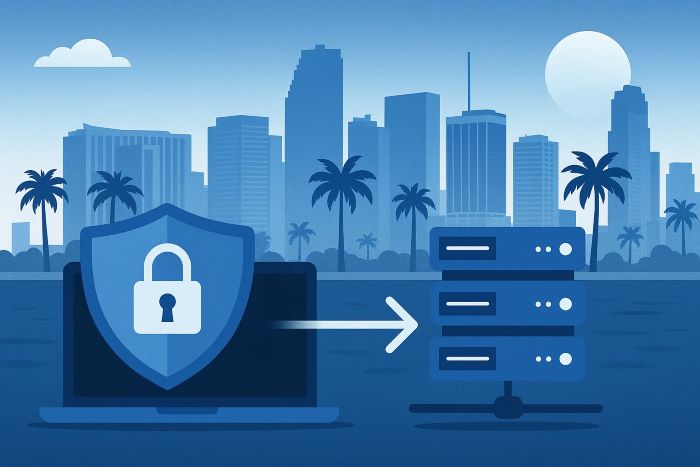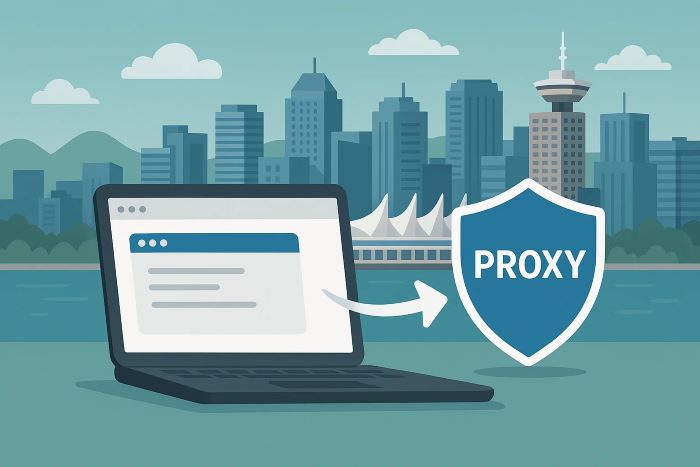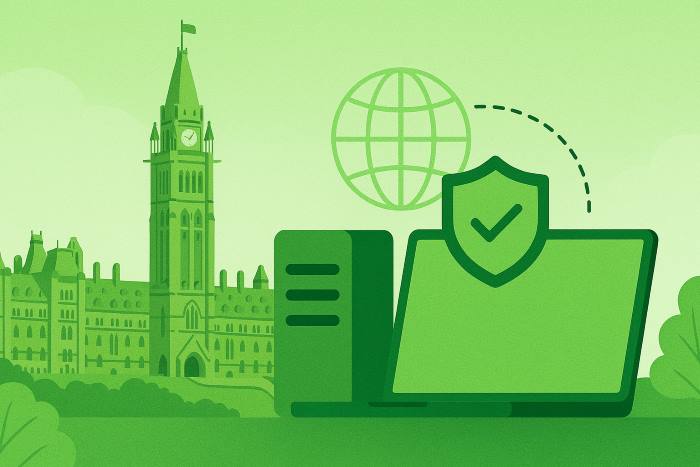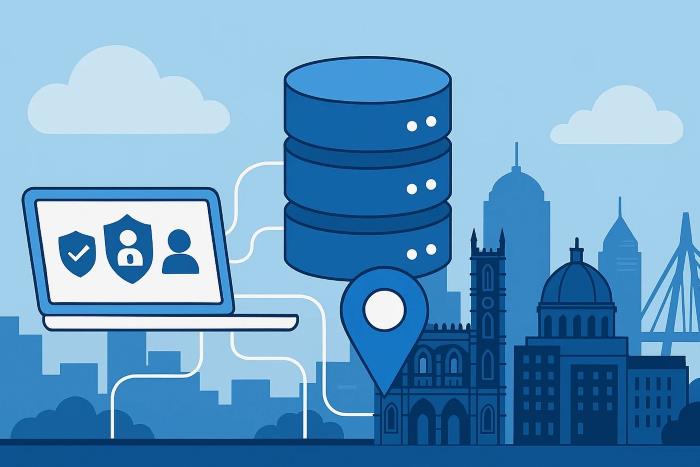25+ Mind-Blowing Copyright Statistics to Know in 2025
14 min. read
Updated on
Read our disclosure page to find out how can you help VPNCentral sustain the editorial team Read more

Copyright is more than just a legal concept – it’s a fundamental aspect of protecting creative works and promoting innovation.
It has helped to preserve the creative industries from music to literature, film to software.
But did you know it has also passed milestones over the years?
Yes, it has.
And we’ve compiled a list of some of the most astonishing copyright statistics that will reveal just that.
So, let’s dive in and discover the incredible impact of copyright!
Shocking copyright statistics
Before delving deep, here are some quick copyright statistics:
- Over the past decade, more than 6 billion URLs were removed from Google search results for copyright infringement.
- In 2022, a total of 484,589 copyright applications were registered.
- The US economy loses between $29.2 and $71 billion annually due to digital video piracy.
- The copyright industries generated over $1.8 trillion of the economic output and employment of 9.6 million workers in the U.S.
- Illegal streaming services account for over 80 percent of online piracy worldwide.
- 80.4% of copyright infringers were men.
General copyright statistics
1. Over 6 billion infringing URLs were removed from Google’s search engine results..
(Source: Google Transparency Report)
Over the years, 372 782 people who own copyrights reported more than six billion links from 4,395,390 different websites to Google. Ultimately, they were taken down.
Google’s proactive approach to removing these URLs helps limit the exposure of infringing content and reduce unauthorized access to copyrighted material.
2. Pirated video content received more than 230.3 billion views in 2017.
(Source: Global Innovation Policy Center)
Pirated videos received an overwhelming 230.3 billion views in 2017, with the majority from countries outside the United States.
Among all the pirated content, TV episodes are in the highest demand, with 170.6 billion views from outside the US and 12.8 billion views within the US.
Also, in terms of content produced in the US, pirated movies have a whopping 26.6 billion illegal online viewings annually, while American TV shows record 126.7 billion illegal views yearly.
3. Illegal streaming services account for over 80 percent of online piracy worldwide.
(Source: Global Innovation Policy Center)
Studies suggest that over 80% of piracy is linked to streaming, which is made possible by using piracy apps and devices.
These have surpassed traditional download-based technologies like BitTorrent in delivering unauthorized live TV programs and video-on-demand content over the internet.
4. In fiscal year 2022, a total of 484,589 copyright applications were registered in the US.
Source: The United States Copyright Office
The United States Copyright Office Annual Report states that in fiscal year 2022, the Office received 486,428 claims for copyright, of which 484,589 were successfully registered.
Consequently, it refused approximately 3.4 percent of the 486,428 claims received
Also, about 98% of the applications were submitted electronically, while less than 2% were received through the mail.
5. More than 6 million copyright registrations were filed in China in 2021.
(Source: Gov.cn)
In 2021, the total number of copyright registrations in China increased by 24.30%, reaching 6,264,378 registrations.
6. The copyright industries generated over $1.8 trillion of the economic output and employment of 9.6 million workers in the U.S.
(Source: International Intellectual Property Alliance)
In 2021, the core copyright industries generated over $1.8 trillion of economic output, accounting for 7.76% of the U.S. economy.
Additionally, these industries employed around 9.6 million workers in 2021, which makes up 4.88% of the entire U.S. workforce and 5.53% of total private employment in the U.S.
7. In the USA, some selected copyright-based foreign sales and export sectors amounted to $230.3 billion in 2021.
(Source: International Intellectual Property Alliance)
The copyright sector contributes positively to the overall trade balance of the United States.
In 2021 alone, this sector’s foreign sales and exports amounted to $230.3 billion.
Surprisingly, that surpasses the sales and exports of other industry sectors, such as agricultural products, chemicals, pharmaceuticals, and medicines.
Copyright infringement statistics
Despite major efforts to stop copyright infringement, the rates are actually increasing over the years.
For example, between 2020 to 2021, there was a 13.1% increase in software piracy.
But that’s not all. Here are some of the amazing copyright infringement statistics you would like to know.
8. 52.3% of users globally accessed films through unlicensed streaming websites, 23.5% through a web download site, and 22.4% via a public torrent network.
(Source: MUSO)
Accessing films through unlicensed streaming websites, web download sites, and public torrent networks is a major issue on a global scale.
With 52.3% of users opting for the former, 23.5% for the second, and 22.4% for the latter.
This poses a threat to both the content creators/artists and users. Artists lose a lot of revenue, while users expose themselves to cybersecurity risks.
9. 80.4% of copyright infringers were men.
(Source: USSC)
A 2019 study reveals that men were 80.4% of copyright and trademark offenders.
Of these offenders, 40.0% were White, 26.7% belonged to other racial categories, 24.4% were Hispanic, and 8.9% were Black.
The average age of these offenders was 44 years, and around 67.4% were citizens of the United States.
10. UK has a lower-than-average infringement level for music, TV, E-books, and video games.
(Source: GOV.UK)
Interestingly, according to a survey in 2021, in the UK, music, TV, e-books, and video games had notably lower levels of infringement than the other content types.
Music piracy had a 15% infringement rate, TV had a 14% infringement rate, e-books had a 14% infringement rate, and video games had an 11% infringement rate.
This could be due to the wide availability of legal options for accessing these types of content, such as streaming services for music and TV shows.
11. In the USA, 54.4% of copyright and trademark offenders were sentenced to prison in 2019.
(Source: USSC)
The average sentence for copyright and trademark offenders in the United States is 12 months.
Additionally, over half (54.4%) of these offenders are sentenced to prison.
However, it is essential to note that none of these offenders were convicted of an offense carrying a mandatory minimum penalty.
12. Between 2020 to 2021, there was a 13.1% increase in software piracy.
(Source: MUSO)
Compared to 2020, there was a 13.1% surge in software piracy in 2021, which marked the highest year for visits to software piracy websites since 2017.
Most traffic, accounting for 73.5%, was through web downloading, with public torrents accounting for 24.5%.
The top countries for visitors to these websites were China, Russia, and the United States, and software piracy comprised 6.7% of all piracy visits in 2021.
13. Individuals between 30 and 44 are more likely to engage in book piracy.
(Source: Statista)
Recent years have witnessed a surge in book piracy, with the age group of 30-44 most likely to engage in this practice.
In the United States alone, over 16.5 million people were found to have downloaded books illegally in 2017.
But not only that, but the younger generation within the same age group is also the largest consumer of pirated movies and music.
14. In 2021, piracy apps and websites generated over $1.34 billion in ad revenue.
(Source: Digital Citizen Alliance)
Piracy apps and websites significantly contribute to revenue generation, with the former generating over $1 billion in ad revenue while the latter generating over $250 million.
Although there are considerably more piracy websites than piracy apps, the latter earns four times more per ad due to improved targeting on mobile devices.
This trend is expected to continue, driving piracy website operators to expand into the piracy app space.
15. More than 10 million ads were rejected by Google in 2017 due to suspected copyright infringement.
(Source: Google Transparency Report)
According to Google, cutting off the money supply is one of the most effective methods for combating rogue sites focusing on online piracy.
As a result, in 2017 alone, Google rejected more than 10 million ads suspected of infringing copyright.
Also, since 2012, they have terminated over 13,000 AdSense accounts and removed more than 100,000 sites from its AdSense program due to policy violations related to copyrighted material.
16. Global online piracy costs the U.S. economy at least $29.2 billion in lost revenue annually.
(Source: Global Innovation Policy Center)
For instance, a study that employed macroeconomic modeling estimated that the US economy loses at least $29.2 billion in revenue each year due to global online piracy.
As a result, digital piracy limits the benefits that streaming offers the economy. People watch way more content than what they pay for.
Copyright infringement on YouTube
Since its inception, YouTube, the biggest video-sharing platform, struggles to tackle copyright infringement.
The old way holders removed infringing content is through the notice-and-takedown process. Unfortunately, this task is long and sometimes ineffective.
That’s why they introduced the content ID system, which allows copyright owners to identify YouTube videos that include content they own. From the available stats, this seems to work well.
Here are a few interesting copyright infringement youtube statistics.
17. About 755 million (99%) content ID copyright infringement claims submitted to YouTube were undisputed.
(Source: Statista)
Between January and June of 2022, Content ID copyright infringement claims submitted to YouTube were disputed only 0.5 percent of the time, leaving around 755 million claims undisputed.
During this period, YouTube’s Content ID tool identified approximately 99 percent of copyright claims submitted to the platform to be true.
18. Content ID is responsible for resolving over 98% of copyright concerns on YouTube.
(Source: Google Transparency Report)
According to the YouTube copyright statistics on Google’s report, most copyright issues are resolved through Content ID, rather than the notice-and-takedown process.
In 2017, 98% of claims processed by Content ID were automated.
This way, the system could identify the copyrighted work and implement the copyright owner’s desired action without any intervention required from the owner.
19. YouTube had nearly 1.5 billion copyright infringement claims in 2021.
(Source: Torrent Freak)
Youtube reviewed 759,540,199 claims using its Content ID system during the latter half of 2021, slightly higher than in previous months.
In total, there were almost 1.5 billion claims reviewed for the year. Also, it’s worth noting that only a small group of copyright holders made these claims.
Specifically, between July and December of 2021, 4,840 rightsholders used Content ID.
P2P and copyright infringement
Peer-to-peer (P2P) file-sharing has been a significant contributor to copyright infringement.
While P2P technology has legitimate uses, people also widely exploit it to share copyrighted material illegally.
Here are some noteworthy statistics about P2P and copyright infringement:
20. The Sims 4 was the most frequently downloaded game on peer-to-peer networks in 2017.
(Source: TECXIPIO)
With over 36 million individuals sharing files, The Sims 4 was by far the most popular game to download on peer-to-peer networks in 2017.
21. 48.6% of individuals who share files daily engage in movie piracy.
(Source: TECXIPIO)
On peer-to-peer networks, around 61% of the daily file sharers worldwide, an average of 16.7 million individuals, shared at least one video file daily.
Of these, 13.36 million people were sharing identified movies, including copyrighted films of different qualities, from cam-rips to full HD versions– all of which are illegal.
Overall, nearly half, 48.6%, of daily file sharers globally engage in movie piracy.
22. 26.9% of peer-to-peer network users download and share copyrighted TV show files.
(Source: TECXIPIO)
In 2017, an average of 7.37 million P2P users downloaded and shared TV series files.
The data is equivalent to 26.9% of them.
23. Over 3 million people use P2P file-sharing networks daily in China.
(Source: TECXIPIO)
During the first six months of 2017, an average of 3,036,589 individuals in China downloaded and shared at least one file per day over P2P file-sharing networks.
This highlights the significant usage of such networks in China, despite the Great Firewall, and suggests a growing trend of individuals opting for P2P file sharing as their preferred method of accessing digital content.
Impact of copyright infringement on the creative industry
24. Reducing software piracy by 10% can lead to a 36% increase in economic activity.
(Source: Orange county business council)
According to a study, reducing software piracy by 10% in just two years could result in significant economic benefits.
It could lead to a 36% increase in economic activity, bringing in $193 billion in new economic benefits, generating $43 billion in new tax revenues, and creating 680,000 new jobs.
In the United States alone, this would mean over $52 billion in new economic activity, $8 billion in new tax revenues, and 34,000 new jobs.
25. Music theft causes an annual loss of $2.7 billion in earnings for the sound recording and downstream retail industries.
(Source: Institute for Policy Innovation Center)
The impact of sound recording piracy is substantial, resulting in a loss of $2.7 billion in earnings annually for U.S. workers.
Out of this amount, $1.1 billion would have been earned by workers in the sound recording or downstream retail industries, whereas $1.6 billion would have been earned by those working in other industries in the U.S.
26. In 2021, there were 290,000 job losses and $29 billion in lost revenue in the creative industry due to piracy.
(Source: Department for Professional Employees)
In 2021, the film and television industry alone suffered a loss of at least 290,000 jobs and $29 billion in revenue due to digital theft.
Consequently, this directly affects the growth of the creative industries and the rewards of their professionals.
27. There was a surge of over 33% in film piracy globally during the COVID-19 pandemic.
(Source: MUSO)
During the COVID-19 pandemic, there was a 33% increase in global digital piracy of television shows and films.
As lockdowns and quarantines became widespread in March 2020, the UK experienced a 30% increase in TV shows and 45% in films.
Conversely, the US experienced a 12% increase in the former and 41% in the latter.
28. Music piracy causes a minimum loss of $422 million annually in tax revenues for the U.S. federal, state, and local governments.
(Source: Institute for Policy Innovation Center)
Piracy significantly impacts U.S. tax revenues, resulting in a minimum loss of $422 million annually for federal, state, and local governments.
Of this total, $291 million represents lost personal income taxes, whereas $131 million represents lost corporate income and production taxes.
Fun facts about copyright
In addition to these copyright stats, here are some fun facts you need to know.
- The world’s first recorded copyright lawsuit dates back to 560 AD, involving two Irish monks who disputed the copying of a manuscript.
- The first copyright law, the Statute of Anne, was enacted in Great Britain in 1710.
- Sony Pictures tried implementing a new copy protection system to prevent their DVDs from playing on other brands. This ended up firing back on them because the DVDs won’t even work on some Sony devices.
- Charles Dickens strongly advocated for international copyright law in the 19th century, as his works were often pirated in the United States.
- Before the digital age, the primary method of piracy was printing and selling unauthorized copies of books, sheet music, and other copyrighted materials.
- The Library of Congress in the United States has the most extensive collection of copyrighted works, including books, films, photographs, and music.
Wrap up
These copyright statistics shed light on the importance of protecting authorship and the negative impact of infringement, especially in the digital age.
The creative industry is constantly adapting to minimize the impact of these infringements.
YouTube’s Content ID system and global efforts to combat P2P file-sharing are part of the measures that tackle the issue.
But the consequences of copyright infringement still pose significant challenges to the creative industry, such as lost revenue, job losses, and reduced investment in new content.
As technology advances, copyright laws and enforcement measures must keep up and ensure the protection of the creator’s works.
Frequently Asked Questions
The most common forms of copyright infringement are related to images and texts.
The longest-lasting copyright is a 1755 letter by John Adams to Nathan Webb.
Despite being created over 265 years ago, the letter was not published until 1956 and is still under copyright today. The copyright will expire in 2052.
The case between Oracle and Google, which involved the alleged copyright infringement of 11,500 lines of Java code in Google’s Android operating system, was the biggest copyright case in recent times.
The legal dispute began in 2010 and spanned over ten years but finally concluded in 2021.
The US Supreme Court ultimately ruled in favor of Google, finding that its use of the Java code constituted fair use.
Sources:
- GOV.UK
- Gov.CN
- Google Transparency Report
- The United States Copyright Office
- Orange county business council
- Torrent freak
- Digital Citizen Alliance
- MUSO
- Global Innovation Policy Center
- Institute for Policy Innovation Center
- USSC
- Statista
- Department for Professional Employees
- Statista
- International Intellectual Property Alliance
- BBC News
- Muso
- Torrent Freak
- Statista









User forum
0 messages